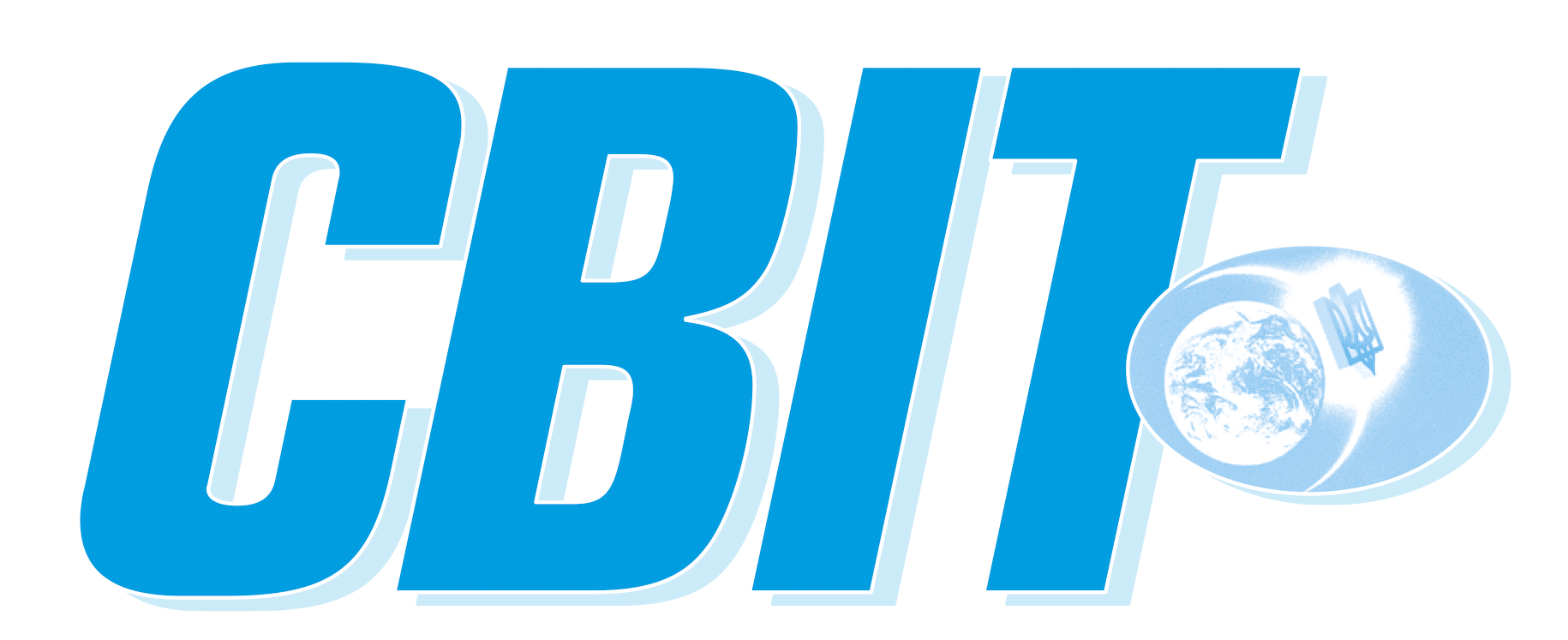Science through education, international cooperation and involvement of students in innovative activities – these principles are upheld at Kyiv Academic University.
The ambitious project of the research university was recently launched, but it did not grow out of nowhere. In the professional community, KAU has gained a reputation as an institution that deals with real “living” science. ‘Svit’ talked about the history, current achievements and prospects of the University with its Director, Academician of the National Academy of Sciences of Ukraine Oleksandr KORDYUK, and Deputy Director for Educational and Scientific Work Vitaliy SHADURA.
FROM “PHYSTECH” to KAU
In fact, the decision to establish the Kyiv Academic University – a scientific institution of the National Academy of Sciences and the Ministry of Education and Science of Ukraine – was adopted on March 25, 2016 at a joint meeting of the Presidium of the NAS and the MES Board. In December of the same year, a respective government Decree was adopted. But the history of KAU began much earlier, with the Kyiv branch of the Moscow Institute of Physics and Technology, which was founded in 1978.
– The Moscow Institute of Physics and Technology (MFTI) has implemented what is now called dual education, and then the system of “phystech”, – Oleksandr Kordyuk says. – Students immediately began working in academic institutes and doing research. But this was not a Soviet invention. It was a “copy” of American research universities, such as the Massachusetts Institute of Technology (MIT) or the California Institute of Technology (Calltech). But what was created at that time in the USSR was very cool and not like other universities.
Oleksandr Kordyuk himself graduated from MFTI. According to him, involvement in research in the first year of study was indirect. He started working at the research institute being a third-year student.
“We perceived our involvement in research thanks to the professors of specialized disciplines – almost all of them were part-time staff. Scholars who worked in leading academic institutes found time to teach. These people had many innovative ideas to tell the students”, Mr. Kordyuk adds.
In the USSR, MFTI attracted all the best. Many talented young people from Ukraine also entered it. The idea to create the MFTI Kyiv branch belonged to the President of the UkrSSR Academy of Sciences Borys Paton.
The structure of “phystech” was as follows: basic education during the first three years, and then students were distributed among the basic departments in academic institutes.
– It was not easy to choose such basic institutions from among those of the Ukrainian Academy of Sciences, but they did it and as a result the MFTI Kyiv branch was created, – the KAU Director says.
The system worked as follows: students were admitted in Kyiv, then they studied for four years at the MFTI in Dolgoprudny near Moscow, and then continued their studies and engaged in research in Kyiv, at the “basic departments” at the institutes of the Academy. Thus, the outflow of students to Moscow was in some way reversed.
In total, about a thousand young scientists were trained from 1978 to 2015.
During the Independence, the MFTI Kyiv branch was reorganized into the Physical and Technical Training and Research Center. Of course, the war put an end to cooperation with the “older brother”, but, according to Oleksandr Kordyuk, even earlier it became clear that we had to go the other way.
– I would not agree to become a director if we continued to have such cooperation, – he adds. – First, there were fewer and fewer people willing to go to Moscow. Secondly, those who left (first and foremost, students from the East and South of Ukraine) did not return. It was clear that this had to end. But when the war broke out, everyone who studied there had to get the opportunity to return to Ukraine.
According to Vitaliy Shadura, back in the early 2000s, speaking at the general meeting of the National Academy of Sciences of Ukraine, Borys Paton proposed to create an academic university. At the same time, attempts were made to take some steps in this direction. The process of reforming the Physics and Technology Training and Research Center at KAU started in 2015.
SCIENCE THROUGH EDUCATION
In the conversation, the University leaders avoid pathos and answer the question of what the main goal of Kyiv Academic University is: involving students in science. And not only in research in KAU, but in science in general.
– Our University has a systemic approach: a student from the first days of study should have plenty of time for research, – Vitaliy Shadura says. – He or she has a scientific supervisor from the very beginning, and the supervisor is responsible for the student. Seminars are held regularly, students talk about scientific papers they have analyzed, and research they have conducted while developing their master’s project. Systematic work is underway, the level of students is growing. During the undergraduate practice in the fourth semester, they behave more professionally, confidently report their scientific results, in particular, using English. By the way, research seminars in some departments are conducted only in English.
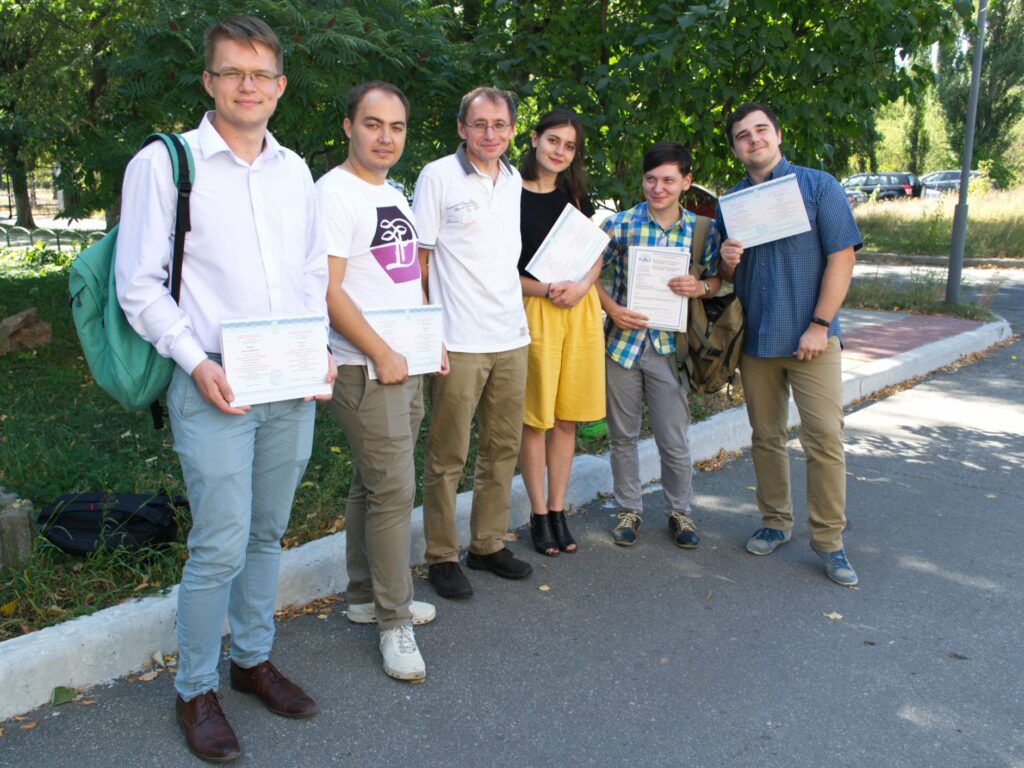
– Students of other universities also come to us and study science, and we welcome them, – Mr. Kordyuk says. – At KAU, we have the opportunity to simplify the path to “living” science for them. More than once I had students from other universities, in particular from the Taras Shevchenko National University of Kyiv (KNU), where I taught. Unfortunately, young people from KNU had much less time for science… We do not compete with other universities, but advocate cooperation, which takes form of involvement of students from different universities in research, various internships, international projects.
In order to facilitate interaction with students of other universities, this year the Bogolyubov internship program was launched, which will be implemented within the framework of KAU’s academic mobility. The program was initiated by the M.M. Bogolyubov Institute of Theoretical Physics of the National Academy of Sciences of Ukraine, and the director of the program is the President of the Academy Anatoliy Zagorodniy. The program is open to undergraduate students of Ukrainian universities who seek to deepen their knowledge in physics, biophysics, mathematics, molecular biology, biotechnology, computer science and participate in research together with leading scientists of the NAS.
According to Oleksandr Kordyuk, KAU is a small university, where you can test some ideas, demonstrate that they work, or reject them. “It is much more difficult to make such an experiment in a large university, firstly, due to bureaucratic red tape, and secondly, the cost of error is much higher,” he adds.
ABOUT FINANCING AND STATE ORDER
Many universities are in a situation when it is necessary to fight for students. According to Oleksandr Kordyuk, KAU has conditions far the best of all. “We have scientists for whom teaching is not the main job,” the director adds. “And other universities need to fire people if there are not enough students.”
As mentioned above, KAU is an institution of dual subordination of the National Academy of Sciences and the Ministry of Education and Science. The state order for master’s training is carried out via the Academy.
– In principle, we planned to receive a certain state order via the Ministry of Education and Science, but so far this has not happened, – Oleksandr Kordyuk says. – We saw that from the standpoint of the bureaucracy it is more difficult to do something via the Ministry of Education and Science than via the National Academy of Sciences. On the other hand, we have projects that are funded through the Ministry’s competitions.
This year, 35 students (almost all of them study on the basis of the state order) were enrolled in the KAU master’s program, they are distributed among seven departments. There are three traditional specialties and relevant educational and scientific programs: 104 Physics and Astronomy, 105 Applied Physics and Nanomaterials, and 122 Computer Science, and two new ones for KAU: 091 Biology (Molecular Physiology and Biophysics and Molecular Biology and Biotechnology) and 111 Mathematics. New educational programs are provided by the new departments of KAU, which were established this year at the Institute of Molecular Biology and Genetics of the NAS (Department of Molecular Biology and Biotechnology) and the Department of Mathematics at the Institute of Mathematics of the NAS.
– As for the trends of the admission campaign, from year to year we see how difficult it is to attract entrants to study physics, – Oleksandr Kordyuk says. – It is much easier to attract them to study Computer science. But this year the situation is much better: for example, we have six excellent students studying applied physics.
MAIN CRITERION
There are no “random” students at KAU. These are people who want to engage themselves with science. Answering the question of how the university is looking for “its” students, the leaders of the university unanimously declare: the main criterion for selection is the desire to pursue science. Whether KAU suits a young person becomes clear during a professional interview. At the same time, of course, there are entrance exams.
“Not everyone who wants to pursue science can really do it,” Oleksandr Kordyuk said. “But we are trying to give a chance, to find out if a person really wants to do it, whether he/she is interested. That’s why our exams take the form of an interview.”
So far, only masters are admitted at KAU. As for bachelors, there are plans to expand the work with them. There are two ways: to develop KAU’s own course under the bachelor’s degree or to cooperate with other universities. “We have long said that we should have joint groups with Taras Shevchenko National University of Kyiv,” Mr. Kordyuk says. “We are currently communicating with the Kyiv-Mohyla Academy on this issue.”
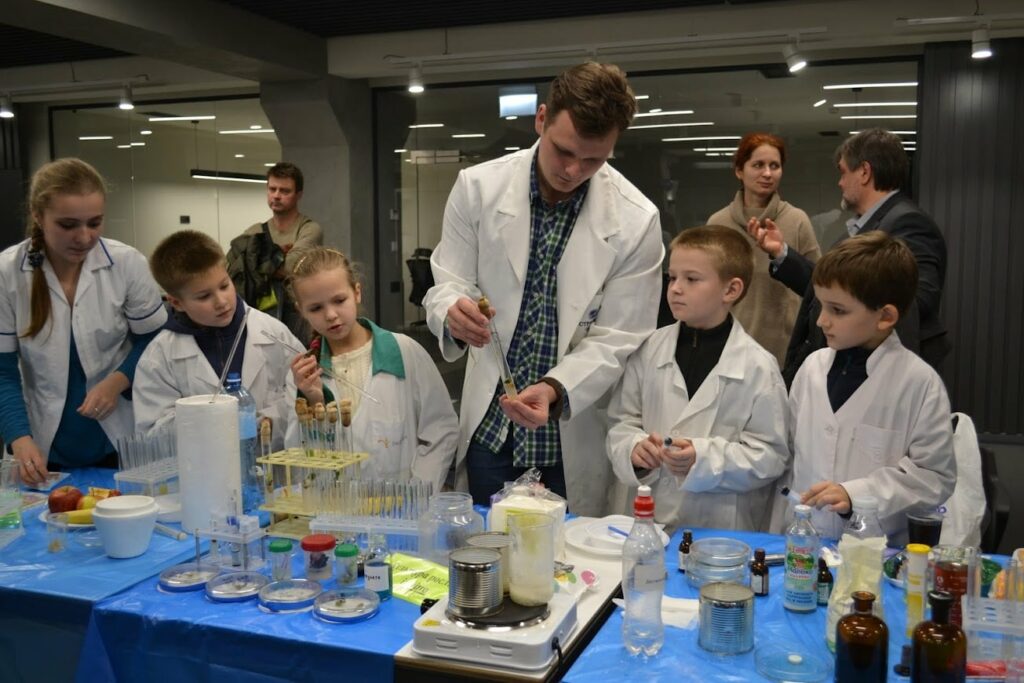
WIDE OPPORTUNITIES
If you do not have your own bachelor’s degree, it is difficult to find good students. But KAU succeeds. “In order for an advanced student to join us, we need to offer him/her good opportunities,” Vitaliy Shadura says.
First of all, it is an opportunity to participate in research from the first semester under the guidance of leading scientists of the basic academic institutes of KAU. Oleksandr Kordyuk recalls that while still studying at the Kyiv branch of the MFTI, he perceived the difference between scientists who were engaged in “living” science and at the same time gave lectures, and university professors. It was more interesting with the first ones.
– There are many really active teams at the National Academy of Sciences that are engaged in science on the “front edge”, – Vitaliy Shadura says. – At the leading departments, students can receive basic training and learn to conduct experiments.
There are also modern devices. For example, the Department of Applied Physics and Nanomaterials has recently installed interesting equipment. And it really becomes a “magnet” for students.
KAU organizes many seminars for young people. So, since last year, Oleksandr Kordyuk, who in addition to KAU, heads the Department of Superconductivity at the G.V. Kurdyumov Institute of Metal Physics of the NAS, conducts a quantum seminar, which brings together students from all over Kyiv.
Similarly, regular seminars are held in other basic institutes of the National Academy of Sciences: M.M. Bogolyubov Institute of Theoretical Physics., Institute of Mathematics, Institute of Molecular Biology and Genetics, O.O. Bogomolets Institute of Physiology.
– We regularly hold schools for students, both online and offline – Oleksandr Kordyuk adds. – At such schools the students get acquainted with the researchers, subject matters of the departments. Last year, young people offered to hold “Academ open air” – a large-scale event where everyone gathers in the open air to communicate with representatives of our departments.
As a result, many students who want to study science come to KAU while studying at other universities. “And we try to help everyone find an interesting task,” Mr. Kordyuk says.
During our conversation he received a phone call from a guy who is still in school. “He plans to submit his research to the Junior Academy of Science,” Mr. Kordyuk says. “A KNU fourth-year student works with him, and together they conduct research in our laboratory of superconducting quantum electronics.
INTERNATIONAL INTERNSHIP AND UNIQUE EQUIPMENT
Another “magnet” for potential KAU students is direct participation in international projects and internships abroad. Oleksandr Kordyuk is convinced that “today it is impossible to do science without international cooperation.”
“You have to travel, report on your results, listen to others, participate in conferences, discussions – this is how the scientific “backstage” works at the international level.”
One of the landmark projects in which Kyiv Academic University is involved and which is funded by the German Federal Ministry of Education and Research is UKRATOP. Under this project, KAU students in master’s programs could do internships at the Institute of Solid State Physics and Materials of the Leibniz Association and the Technical University of Dresden. The program is also designed for graduate and doctoral students. They must defend their projects and thesis in Ukraine. This year the last admission was held within the framework of this four-year project.
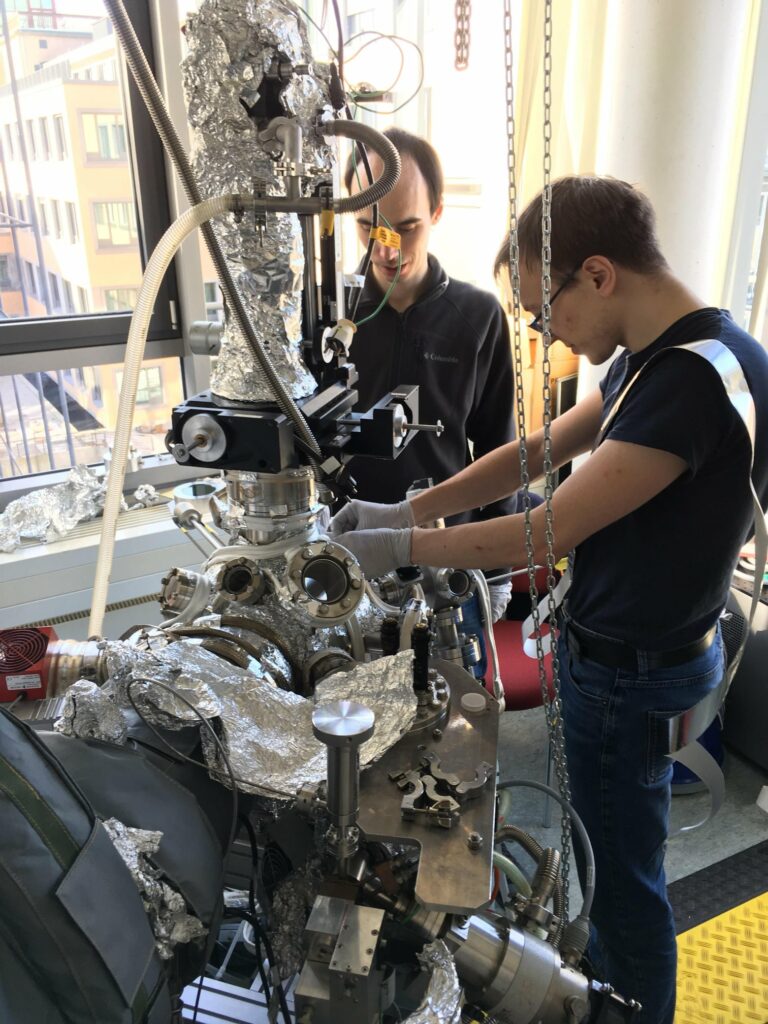
– The internship is designed to be a supplement to the scientific work that students do at the university, – Oleksandr Kordyuk says. – In total, students’ internships last six months.
Thus, the scheme is fully consistent with the concept of study at KAU, according to which all lectures fall on the first year of study, and the second year is fully allocated for research. “At the second year of study, students went on an internship, worked on equipment that is much better than ours, and the example of the first participants showed how cool it is, how much it gives students: they work on the modern equipment, learn new methods, they learn to report their results at conferences, as well as improve their English”, Mr. Kordyuk says.
Besides, under the UKRATOP project, Kyiv Academic University received unique equipment from the German party, it is the optical furnace for growing single crystals and equipment for sample preparation, as well as a helium cryostat with a superconducting magnet with a field of up to 16 Tesla. According to Oleksandr Kordyuk, this is a “record-breaking” magnet for Ukraine.
Although the project was designed for four years, it is planned to continue cooperation. “German colleagues are delighted with our students,” the KAU Director adds. “They are ready to finance the project even at the expense of IFW Dresden.”
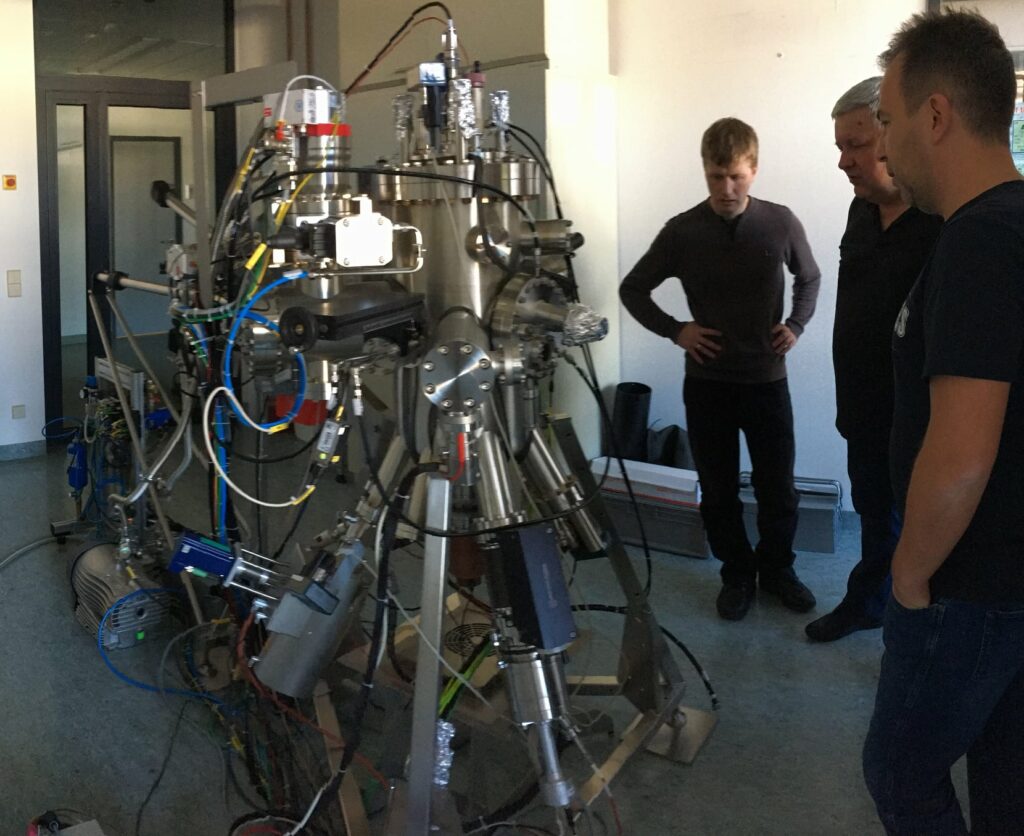
Nowadays, KAU is involved in another project, “Core of Excellence”, which is also funded by the German Ministry of Education and Research. “We have already won its first stage,” Oleksandr Kordyuk says. “We actively work on creation of a Ukrainian-German laboratory for the study of quantum materials. Regardless of whether we receive additional funding from the BNBF or not, we will establish this laboratory.”
Other departments also develop international cooperation. The Department of Biophysics and Molecular Physiology is always one of the most active. There, the key figure who knows how to make students be passionate about biophysics is Professor Nana Voitenko. Many of our students are also involved in its international projects.
BREAKTHROUGH CENTERS
In addition to specialized departments at basic institutes, research centers are created in the structure of Kyiv Academic University; they are formed on a temporary basis to conduct research in particularly important modern scientific areas. In fact, these are KAU subdivisions on the basis of several scientific institutions of the National Academy of Sciences of Ukraine established on the interdisciplinary basis.
For example, the Department of Mathematics at the Institute of Mathematics of the National Academy of Sciences of Ukraine, Department of Applied Physics and Nanomaterials at the G.V. Kurdyumov Institute of Metal Physics, Department of Theoretical and Mathematical Physics at the M.M. Bogolyubov Institute of Theoretical Physics, scientists of the Institute of Problems of Mathematical Machines and Systems, Institute of Software Systems, Institute of Information Registration, Institute of Molecular Biology and Genetics and other institutes of the NAS are involved in the Research Data Center creation.
– Today, machine learning is used in many fields of science, – Vitaliy Shadura explains. – KAU Data Research and Machine Learning Laboratory (DRMLL) is subordinated to the Data Research Center, which closely cooperates with all the above institutions. Another example: DRMLL at the Institute of Molecular Biology and Genetics of the National Academy of Sciences of Ukraine cooperates with the Laboratory of Systems Biology, which deals with the spread of viruses and their mutations. Specialists who work there also use machine learning methods in their work. Our students execute research projects in such laboratories.
– It is even difficult for me to separate KAU’s “own” projects and projects of academic institutes where we have joint departments, – Oleksandr Kordyuk adds. – So, all the doors, all the opportunities for cooperation that are available at the National Academy of Sciences of Ukraine are open for students.
Currently, the Center for Quantum Materials and Technologies is being developed at KAU, which is one of the leading fields of the University’s activity. Recently the project of scientists of the University “Multiband structure of electronic states: physics and applications” won the competition of the National Research Foundation of Ukraine “Support for leading and young scientists”. Oleksandr Kordyuk is the scientific supervisor of the project.
– The properties of materials are determined by their electrons, which are formed into the electronic structure. We are used to imagining a structure in direct space, but it is easier to structure electrons in reverse space, – he says. – Electrons form a multiband structure in this space for the materials which are the most interesting for electronic applications.
Researchers want to identify the effect of this multiband structure on the electronic properties of materials. According to Oleksandr Kordyuk, one of the ideas is to create materials based on the multiband approach, which would overcome the problem of decoherence, which exists in quantum computers. In general, these materials would be widely used in electronics.
STRATEGIC INNOVATION MANAGEMENT
Another important component of KAU training is the involvement of students, graduate students and young researchers in innovation activities. In particular, they have the opportunity to combine work in an academic startup with work on a master’s project, join the work of an existing startup or create their own. To do this, the University has created a special subdivision – Innovation Center.
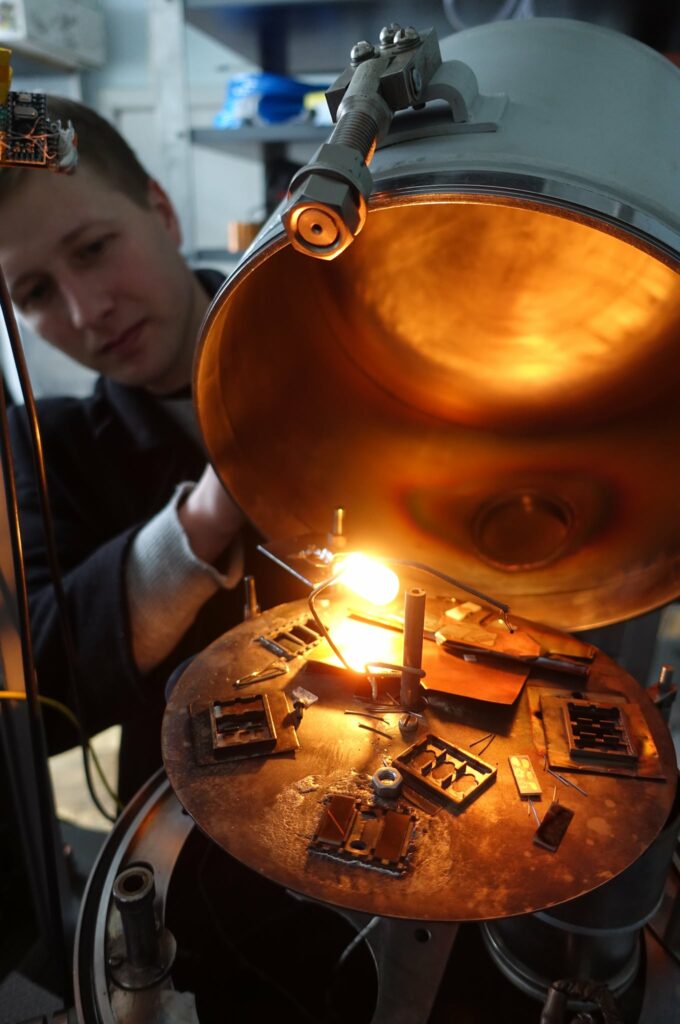
– We see that students are interested in innovation, so we try to support their aspirations, – Oleksandr Kordyuk says. – This is a motivation for certain students who want to do business and at the same time they have a flair for science. It is a pity to lose these people for science, but if they start doing “scientific” business, developing their startups, it means that their skills and efforts are developing in the right direction.
Mr. Kordyuk reminds us that one of the main projects of the Center is the Academ.City science park, which is under construction in accordance with the model of the Adlershof in Berlin. It is designed to build a bridge between the institutes of the NAS and business. “German colleagues involved in the project help us to develop its ideology”, Mr. Kordyuk adds. “They act as a guarantor to prevent the theft of budget funds as it sometimes happens.”
Kyiv Academic University, like many other institutions, faces the challenge of bridging the gap between good ideas, scientific and technical developments and business.
Vitaliy Shadura is convinced that in order to do this, we need appropriate managers. “We call this sphere “strategic innovation management” and believe that it requires a special master’s program,” Vitaliy Shadura adds. “We are currently working on its creation and hope to launch it next year. It will be unique for Ukraine.”
EDUCATE FROM SCHOOL-DAYS
KAU understands the importance of young people involvement in science from school-days. To this end, several projects are in the course of implementation, but it is acknowledged that there is not enough strength to implement everything that was conceived. “But we consciously support multivectorness, because it is clear that the University system is complex, it includes many parameters, and it is difficult to predict which of them will “play”, Oleksandr Kordyuk says.
According to him, the interest in something new, in research, is much greater among younger students than among high school students, and then it disappears for various reasons. “Of course, cooperation with the Junior Academy of Sciences would be well-timed”, Mr. Kordyuk says. “However, it is developing more slowly than we wanted. But we organize “doors open days”, speak to school students. We have a correspondence academic school. We hold lectures for teachers, support summer camps for mathematicians and physicists.”
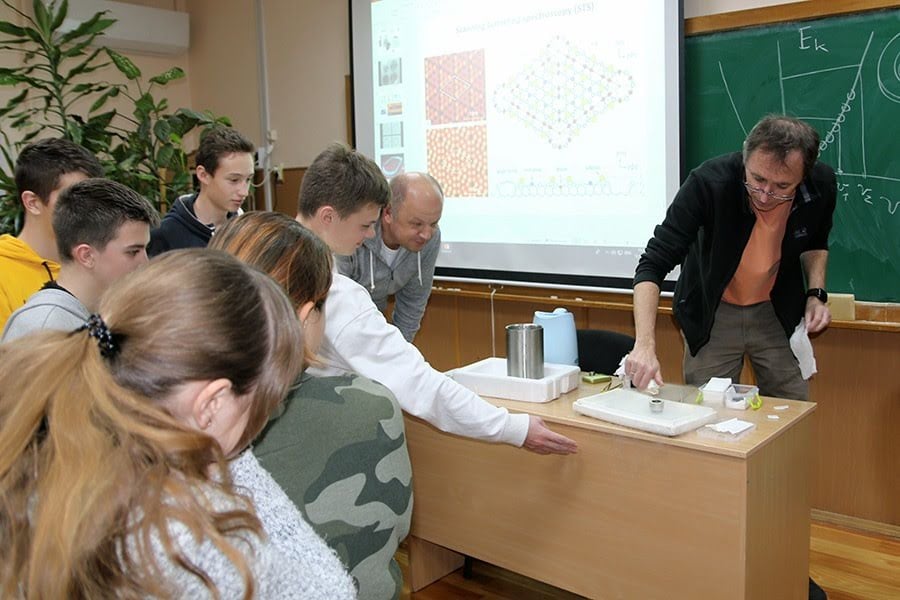
– We develop other areas as well, – Vitaliy Shadura adds. – We held three complex competitions together with the Taras Shevchenko National University of Kyiv: in physics, mathematics and engineering. We also have electives for high school and first-year students: this year, in linear algebra and classical mechanics. We also hold lectures for junior students together with the NGO “Noosphere”.
Not everyone can pursue science: firstly, not everyone is interested, and secondly – it is needed to have appropriate abilities. “It’s a pity when a teenager had a desire to pursue science, and then it didn’t work out this way.” Oleksandr Kordyuk summarizes. “We want to give a chance to school children, students who are thirsty for science to realize themselves as much as possible.”
Dmytro SHULIKIN
Svit newspaper, № 45 – 46, December, 2021
IN THE PHOTO:
Oleksandr Suvorov, one of the recent graduates of the Master’s and Postgraduate Studies at the FTTRC, together with other KAU members inspect the equipment for single-crystal film deposition at IFW Dresden;
Volodymyr Bezguba, a post-graduate student of the UKRATOP program, and a post-graduate student of IFW Dresden work together with a photoemission spectrometer;
One of the Science Days, which KAU helped to organize together with Unit.City;
The KAU first commencement in 2019. Graduates of the Department of Applied Physics and Nanomaterials (and UKRATOP internship program);
Oleksandr Suvorov improves the process of thin superconducting film deposition at the Institute of Metal Physics of the National Academy of Sciences;
Oleksandr Kordyuk gives the demo lesson in one of the lyceums, talks about KAU and superconductivity.
